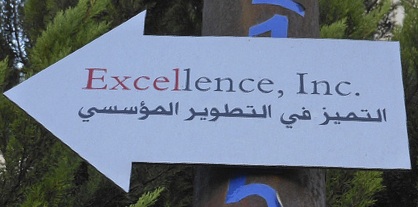 In completing my assignment for Barry’s Blog (brief observations on “what I have learned”) I included “Excellence is heterogeneous.” (See Lessons.) My explanatory note said, “Technique is important in the arts. So are relevance, inclusiveness, and impact–to name only a few additional criteria. Excellence is best sought in everything that matters but can seldom be achieved in all categories in equal measure.”
In completing my assignment for Barry’s Blog (brief observations on “what I have learned”) I included “Excellence is heterogeneous.” (See Lessons.) My explanatory note said, “Technique is important in the arts. So are relevance, inclusiveness, and impact–to name only a few additional criteria. Excellence is best sought in everything that matters but can seldom be achieved in all categories in equal measure.”
I’ve been down this road before and have caught the usual flak around the topic. Nevertheless, it’s worthwhile revisiting. And to revisit it a bit, I’ve been waiting for an excuse to point readers to Nina Simon’s two wonderful posts on the topics of excellence and engagement from last September.: But What about Quality? and What Are Your Engagement Goals? What so impresses me about the first post is the beginning of a list of categories of quality–a taxonomy of quality if I’m going to be excessively academic about it. She does not believe it’s a definitive list. The categories may not be equally important (or they may be!). I’ve made a rudimentary stab at some of this before, but she has carried it much further than I.
Quality Q’s:
- AESTHETIC: is it beautiful?
- TECHNICAL: is it masterful?
- INNOVATIVE: is it cutting edge?
- INTERPRETATIVE: can people understand it?
- EDUCATIONAL: can people learn from it?
- RELEVANT: can people relate to it?
- PARTICIPATORY: can people get involved or contribute to it?
- ACADEMIC: does it produce new research or knowledge?
- BRIDGING: does it spark unexpected connections?
- IGNITING: does it inspire people to action?
Much more work should be done with this. Sometime I may, but all are welcome to lend a hand.
In her second post she articulated her Museum’s engagement goals, another important contribution.
- RELEVANT: Connected to compelling needs, assets, and interests in Santa Cruz County. Connected to our core content of contemporary art and regional history.
- SUSTAINABLE: Provides important resources to help the MAH thrive financially and organizationally.
- BRIDGING: Brings community members together across differences. Celebrates diversity and encourages unexpected connections.
- PARTICIPATORY: Invites diverse community members to make meaningful contributions as co-creators, collaborators, and energized constituents.
- IGNITING: Inspires excitement and curiosity about art and history. Expands opportunities for deeper engagement beyond the museum.
In any work, it is important to identify the ends sought as a critical component in constructing a project and in preparing to evaluate it.
Once again, and this happens many times per year, my hat is off to Ms. Simon for very important work in advancing our understanding of issues vital to the practice of community engagement. This is not the final word on either topic, but presenting a draft from which to work is invaluable service to the field.
Engage!
Doug
- Photo:

 Some rights reserved by mikecogh
Some rights reserved by mikecogh

Thanks for the shout-out, Doug.
In the spirit of heterogenity, I want to note that the most important part of us developing our engagement goals was deciding what WASN’T a goal for us. It’s easy to look at any list of goals and say, “yeah, of course, we want to do those things too.” Our most productive conversations were about the goals we couldn’t achieve. For example, we know that we can spark interest and engagement, but that our organization is not a place to go deep. Hence “igniting” and not “deepening” or something similar.
Had I had space to go further I would have commented on that as well. Realizing the need to make choices, doing so, and sticking to those choices is a great lesson for planning in any realm, not just community engagement. As always, thanks for your generosity in letting me steal from you!